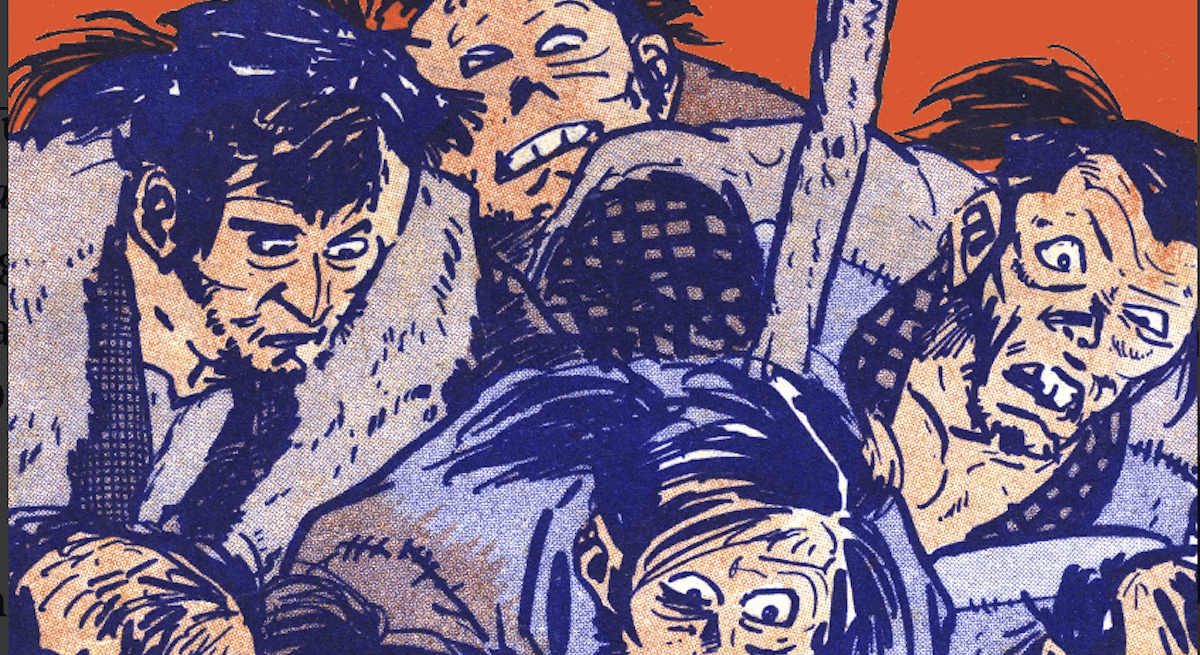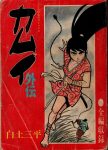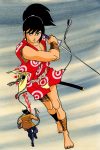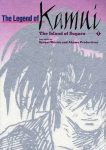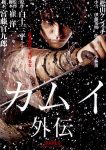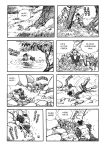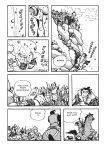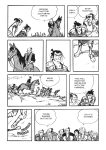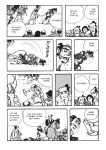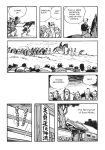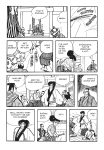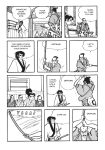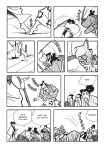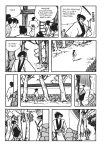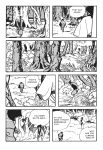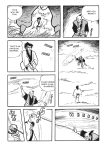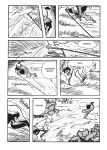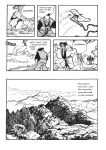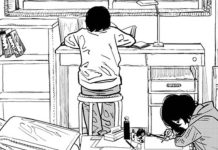In their continuing efforts to publish important work of manga in English, Montreal-based graphic novel publisher Drawn and Quarterly revealed the cover for their next big manga series: Sanpei Shirato’s The Legend of Kamui. This license was announced back in November 2023 but D&Q’s announcement on Facebook revealed the cover and the January 14, 2025 release date for the 600-page first volume of the series (It’s available for pre-order now!) D&Q’s pre-order page also includes a sneak peek of pages from this iconic manga series about a fearless ninja and his clan struggling to survive in the cruel and unjust world of feudal-era Japan.
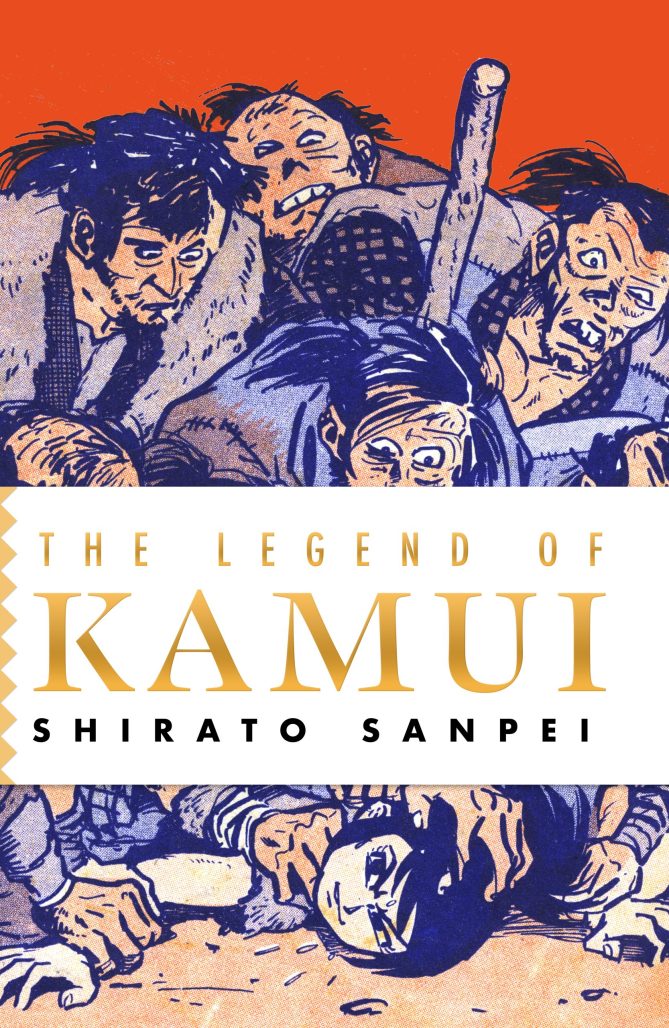
Here’s the description of the series, from the Drawn and Quarterly website:
At long last, manga titan Shirato Sanpei’s groundbreaking epic makes its way into English. Celebrated as a watershed of both the Japanese counterculture and dramatic, longform storytelling in manga, The Legend of Kamui serves up clashing swords and class struggle to create a timeless political allegory set in feudal Japan. This ten-volume series is a must-have for fans of samurai and ninja manga and anime, and of other giants of postwar manga like Tezuka Osamu, Mizuki Shigeru, Tsuge Yoshiharu, and Lone Wolf and Cub’s Kojima Goseki.
It’s the 17th century in Japan. Child outcast Kamui lives on the fringes of a miserably stratified society. Fueled by pure grit, rage, and a dash of cunning, his only way out is to take up the mantle of ninja. Follow scrappy peasants, cold-blooded ninja, and disgraced and exalted warriors as they navigate the unforgiving hardships of a violent yet hopeful age. With its vivid and critical attention to social injustice and environmental issues against a backdrop of heart-pounding action and romance, this multilayered gekiga drama not only redefined ninja and samurai fantasy, it also offers astonishing parallels with the modern day. Originally serialized between 1964 and 1971 in the legendary alt-manga magazine Garo, The Legend of Kamui is translated by social historian and decorated academic Richard Rubinger.
The ten-volume series Kamui Den, a.k.a. The Legend of Kamui remains a landmark manga masterpiece for several reasons. When it was first published in the 1960s, Shirato’s Marxist idealism, as depicted in Kamui Den resonated with the student protest movement and an active counter-culture movement in 1960s Japan around the same time Vietnam War protests roiled college campuses in the States.

But even before drawing Kamui Den, Shirato (née Noboru Okamoto) was inspired by his father, Toki Okamoto, a painter known for his depiction of proletariat themes and ideas. D&Q’s author bio for Shirato also notes that Toki Okamoto trained Akira Kurosawa before he went on his career in filmmaking (Seven Samurai, Ran and so much more).
Like many manga creators of his time, Shirato worked on kamishibai (paper theater) panels and manga for the rental manga market. He also created several popular shonen manga series featuring ninja, including Ninja Bugeichou and Sasuke.
Shirato, along with co-founder/publisher Katsuichi Nagai founded Garo Magazine in 1964. With Kamui Den as its flagship series, Garo Magazine became THE legendary alternative manga anthology magazine in Japan. In fact, the magazine is named after a character in The Legend of Kamui.
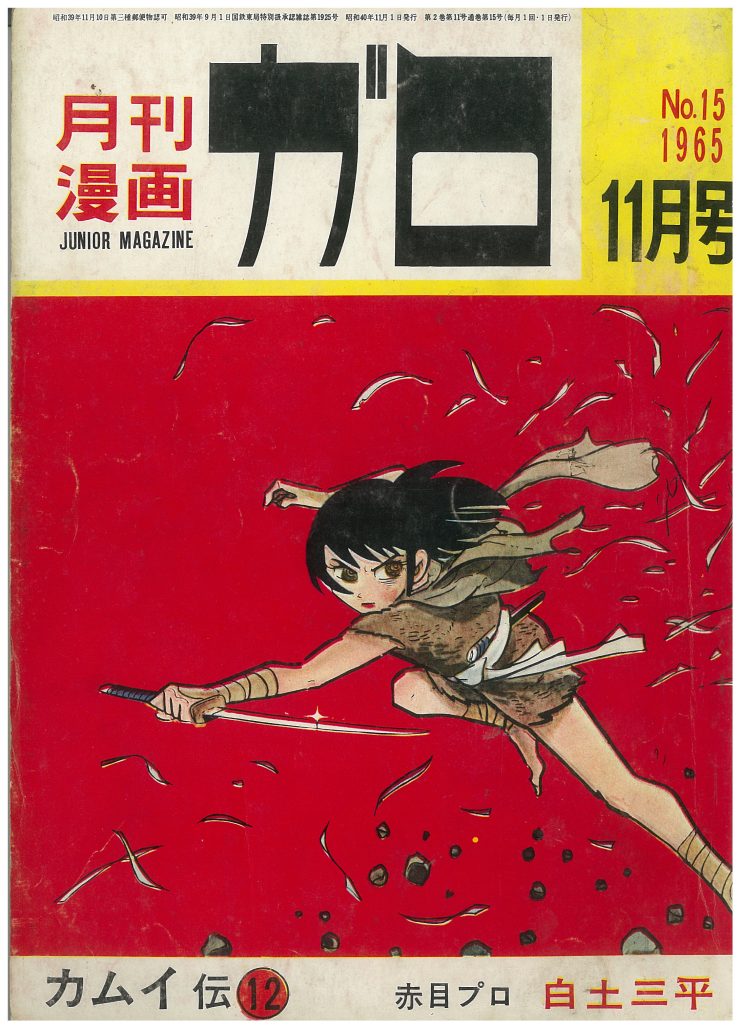
While average sales for Garo were much lower than popular weekly or monthly magazines like Shonen Sunday, this groundbreaking magazine published by Seirindo launched or transformed the careers of many legendary manga creators, including many published in English by D&Q. Yoshihiro Tatsumi (A Drifting Life), Yoshiharu Tsuge (creator of Negishiki), Susumu Katsumata (creator of Red Snow), Kuniko Tsurita (The Sky is Blue With a Single Cloud), and Seiichi Hayashi (Red-Colored Elegy) were all featured in Garo, along with countless more that aren’t yet published in English. Even Kitaro-creator Shigeru Mizuki had several memorable stories published in the pages of Garo. Although the magazine published its last issue in 2002, Garo‘s impact on manga, and comics worldwide endures.
Goseki Kojima, co-creator of the massively successful and equally influential manga series Lone Wolf and Cub, started his career as an assistant to Shirato. Without Kojima, there is no Frank Miller, and the influence on comics in North America goes on from there. And that other famous manga about ninja, Naruto by Masashi Kishimoto? It too was influenced by the ninja manga stories created by Shirato.
Now, some people might read this article and think “Wait, didn’t VIZ Media release this manga series in the 1980s, through Eclipse Comics?” This is where things get a little confusing.
There was a series published in the 1980s by VIZ under the title The Legend of Kamui with lettering by Usagi Yojimbo creator Stan Sakai, no less. This was one of the first releases of Japanese manga in English to the direct market comic shops for VIZ Media, along with First Comics release of Lone Wolf and Cub.
However, the Eclipse version of The Legend of Kamui was actually a side-story, not the main Kamui Den story originally published in Garo. Published in Japan as Kamui Gaiden: Sugaru no Shima (Island of Sugaru), this standalone story was re-released as a two-volume graphic novel by VIZ Media in 1990. The Island of Sugaru story follows Kamui’s encounter with a clan of fishermen in an impoverished and isolated village, and a mysterious woman whose past comes back to haunt her. It was written and drawn by Shirato and serialized in the pages of Shogakukan’s seinen manga magazine, Big Comic. This article on the Total Eclipse Blog about the Legend of Kamui comics shares some fascinating tidbits from the letter pages of the Eclipse single issues, including commentary from translator Frederik Schodt.
Meanwhile, The Legend of Kamui series that Drawn and Quarterly is publishing in English is the original Kamui Den series serialized in Garo from 1964-1971.
Besides all that, Shirato wrote yet another series that was illustrated by Tetsuji Okamoto (Shirato’s younger brother) from 1987 to 2000 called, you guessed it, Kamui Den.
Incidentally, Sanpei Shirato died on October 8, 2019 at the age of 89, due to aspiration pneumonia. His brother and creative collaborator Tetsuji died four days later, at the age of 88. They were honored by the editorial department at Shogakukan’s Big Comics magazine with a joint obituary.
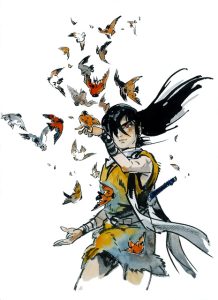
And those other similar sounding anime and live-action movie series like The Dagger of Kamui or Ninja Kamui? Those stories are by different authors and aren’t related to Shirato’s Legend of Kamui. But that Kamui Gaiden live action movie released in 2009? Now THAT is based on Sanpei Shirato’s Kamui stories. So if you’re confused, well, that’s perhaps understandable. But hopefully, the English release of Shirato’s Kamui manga stories will clear things up. Maybe.
Drawn and Quarterly will release The Legend of Kamui vol. 1 in January 2025 as a 600-page omnibus with a $39.95 USD/ $49.95 CAD cover price. Here are some preview pages from the upcoming release. You can see more on D&Q’s pre-order page for The Legend of Kamui vol. 1.
Deb Aoki contributed to this article by adding additional background info on Sanpei Shirato, Tetsuji Okamoto and the various Kamui anime and live action movie adaptations.



